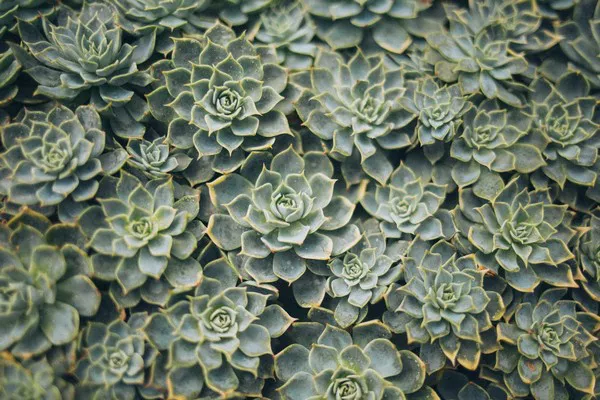Succulents have become a popular choice for both indoor and outdoor gardens due to their striking appearance and low maintenance requirements. However, one aspect of succulent care that often perplexes growers is knowing when and how to cut succulents. Proper cutting techniques are essential for maintaining the health and aesthetics of your succulents.
Understanding Succulents
Before we delve into cutting succulents, it’s crucial to have a basic understanding of these unique plants. Succulents are a diverse group of plants known for their fleshy leaves and stems, which are adapted to store water. This adaptation allows them to thrive in arid conditions, making them ideal for water-wise gardening. Succulents come in a wide variety of shapes, sizes, and colors, making them a versatile addition to any garden or home.
Why Cut Succulents?
There are several reasons why you might need to cut succulents:
Propagation: One of the most common reasons for cutting succulents is to propagate new plants. Succulents can be propagated through stem cuttings, leaf cuttings, or offsets.
Maintenance: Trimming succulents can help maintain their shape and size, preventing them from becoming overgrown and leggy.
Health: Cutting out dead or diseased growth is essential to keep your succulents healthy and vibrant.
Aesthetics: Pruning succulents can enhance their appearance and encourage bushier growth.
Control: Cutting can be used to control the spread of certain succulent species, preventing them from taking over your garden.
When to Cut Succulents
Knowing when to cut succulents is crucial to ensure the best results. Here are some guidelines to help you determine the right time to make your cuts:
Active Growth Period: The best time to cut succulents is during their active growing season, which typically occurs in spring and summer. During this time, succulents are more likely to recover quickly from pruning.
Healthy Growth: Ensure that the succulent you plan to cut is in good health. Avoid cutting unhealthy or stressed plants, as they may not recover as well.
Avoid Extreme Weather: Try to avoid cutting succulents during extreme weather conditions, such as intense heat or cold. Cutting during milder weather is less stressful for the plant.
Dormancy: Some succulents go through a dormant period in the winter when growth slows down. It’s generally best to avoid cutting during this time, as the plant may not respond well to pruning.
Flowering: If your succulent is flowering, consider waiting until the flowering period is over before making major cuts. Cutting during flowering can affect the plant’s ability to bloom.
Methods for Cutting Succulents
Now that you understand when to cut succulents let’s explore various cutting methods:
Leaf Cuttings:
a. Select a Healthy Leaf: Choose a healthy succulent leaf and remove it cleanly from the plant. Gently twist or cut the leaf near the stem.
b. Callus the Leaf: Allow the cut end of the leaf to dry and callus for a day or two. This step helps prevent rot when you plant the leaf cutting.
c. Plant the Leaf: Place the callused end of the leaf in well-draining succulent soil, burying it slightly. Water sparingly and keep it in bright, indirect sunlight.
d. Root Development: Over time, the leaf will develop roots and a new plantlet. Once it has grown large enough, you can transplant it into its own pot.
Stem Cuttings:
a. Choose a Healthy Stem: Select a healthy, non-flowering stem and cut it cleanly using sharp, clean scissors or pruning shears.
b. Callus the Stem: Allow the cut end of the stem to dry and callus for a day or two.
c. Plant the Stem: Insert the callused end of the stem into succulent soil, burying it about an inch deep. Water lightly and place it in bright, indirect sunlight.
d. Root Development: The stem cutting will develop roots and eventually grow into a new succulent plant.
Offset Division:
a. Identify Offsets: Some succulents produce offsets or “pups” at the base of the main plant. These can be gently separated when they have grown large enough to handle.
b. Remove and Plant Offsets: Carefully remove the offset from the main plant, ensuring that it has its roots attached. Plant the offset in succulent soil, water lightly, and place it in bright, indirect sunlight.
Pruning:
a. Shape Maintenance: To maintain the shape and size of your succulent, trim back overgrown or leggy growth. Use sharp, clean scissors or pruning shears to make clean cuts just above a leaf node.
b. Remove Dead or Diseased Growth: Regularly inspect your succulent for dead or diseased leaves and stems. Cut these out to promote overall plant health.
Tips for Successful Succulent Cutting
To ensure successful succulent cutting, keep these tips in mind:
Use Clean Tools: Always use sharp, clean scissors or pruning shears to make your cuts. Dirty or dull tools can damage the plant.
Allow for Callusing: Allowing cut ends to callus before planting is crucial to prevent rot. Be patient during this step.
Choose the Right Soil: Succulents thrive in well-draining soil. Use a specialized succulent mix or amend regular potting soil with perlite or sand.
Water Sparingly: After cutting or planting, water sparingly. Overwatering is a common mistake that can lead to rot.
Provide Adequate Light: Place your cuttings or newly planted succulents in bright, indirect sunlight. Gradually introduce them to more direct sunlight as they grow.
Be Patient: Succulents are slow growers, and it may take some time for your cuttings to establish roots and grow into mature plants.
Conclusion
Mastering the art of cutting succulents is an essential skill for any succulent enthusiast. Whether you’re propagating new plants, maintaining the health and aesthetics of your existing succulents, or simply experimenting with different varieties, knowing when and how to cut succulents is key to their success.


